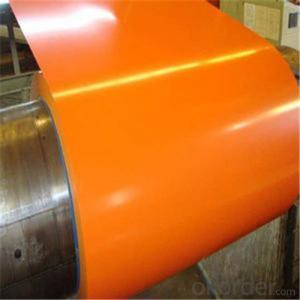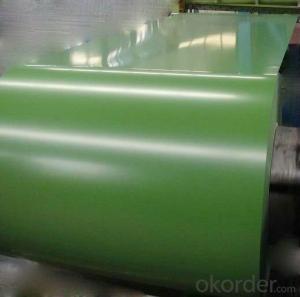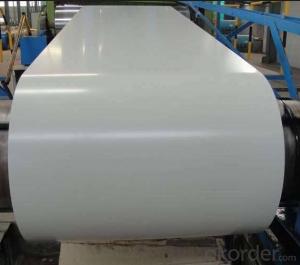Stainless Steel Heat Color
Stainless Steel Heat Color Related Searches
Paint For Galvanized Steel Paint For Stainless Steel Heat Color Stainless Steel Stainless Steel Color Paint Stainless Steel Color Galvanized Steel Paint Black Stainless Steel Paint Liquid Stainless Steel Paint Stainless Steel Spray Paint Rustoleum Stainless Steel PaintHot Searches
Used Foam Board Insulation For Sale Magnesium Oxide Board For Sale Hdf Board For Sale sintra board for sale High Mast Light Price List Solar High Mast Light Specification Gypsum Board Price Per Sheet In India High Mast Light Specification High Density Mdf Board Suppliers 5 8 Type X Gypsum Board Price Stage Light Price Solar Inverter Fault Light Polyurethane Insulation Board Price Mdf Price Per Sheet Pre Laminated Board Price List 4Mm Mdf Sheet 1220X2440Mm Price Led Light Manufacturers Solar Inverter Pcb Board 6Mm Mdf Board Price 18Mm Ply Board PriceStainless Steel Heat Color Supplier & Manufacturer from China
Okorder.com is a professional Stainless Steel Heat Color supplier & manufacturer, offers integrated one-stop services including real-time quoting and online cargo tracking. We are funded by CNBM Group, a Fortune 500 enterprise and the largest Stainless Steel Heat Color firm in China.Hot Products
FAQ
- Stainless steel pipes cannot be subjected to anodization. Anodization is typically employed on aluminum to generate a safeguarding oxide layer on its surface. Conversely, stainless steel already possesses a spontaneous formation of a natural oxide layer, referred to as a passive layer, when it comes into contact with oxygen. This passive layer offers corrosion resistance to stainless steel pipes, eliminating the need for anodization. Consequently, anodization is neither essential nor possible for stainless steel pipes.
- Stainless steel pipes excel in corrosive environments, owing to the presence of chromium in their composition. This imparts high resistance to corrosion and oxidation, making them ideal for applications where exposure to corrosive substances like acids, chemicals, and saltwater is common. The chromium in stainless steel creates a protective layer on the pipe's surface, known as the passive layer. This shield effectively prevents the underlying metal from being affected by corrosive elements. Consequently, stainless steel pipes can endure prolonged exposure to corrosive environments without degradation or loss of structural integrity. Moreover, stainless steel pipes exhibit excellent resistance to pitting corrosion. This occurs when localized damage to the passive layer leads to the formation of small pits or holes on the surface. This resistance further enhances their reliability and durability in corrosive environments. Additionally, stainless steel pipes possess other advantageous properties such as strength, durability, and high temperature resistance. These attributes contribute to their preference in industries like chemical processing, oil and gas, marine, wastewater treatment, and more. In summary, stainless steel pipes are renowned for their exceptional performance in corrosive environments. Their resistance to corrosion, pitting, and high temperatures, alongside their durability and strength, make them a dependable and cost-effective choice for applications requiring corrosion protection.
- Yes, stainless steel pipes are fire-resistant. Stainless steel is known for its high melting point and excellent resistance to fire. It does not readily ignite or contribute to the spread of fire, making it a safe material for various applications, including pipes. Stainless steel pipes can withstand high temperatures without significant deformation or structural damage, providing an added level of safety in fire-prone environments.
- Yes, stainless steel pipes are generally resistant to high temperatures. Stainless steel is specifically designed to withstand high heat and maintain its structural integrity at elevated temperatures. The high chromium content in stainless steel forms a protective oxide layer on the surface, which helps to prevent corrosion and maintain its strength and durability even in extreme temperature conditions. This makes stainless steel pipes suitable for various applications that involve high temperatures such as industrial furnaces, heat exchangers, and exhaust systems. However, it is important to note that the specific resistance to high temperatures may vary depending on the grade and alloy of stainless steel used. Therefore, it is crucial to select the appropriate grade of stainless steel based on the specific temperature requirements of the application.
- To calculate the expansion of stainless steel pipes, you need to consider the coefficient of thermal expansion (CTE) of the material. The CTE is a measure of how much a material expands or contracts when subjected to temperature changes. First, determine the initial length of the stainless steel pipe. This is the length of the pipe at the starting temperature. Next, determine the final temperature at which the pipe will be operating. This is the temperature at which you want to calculate the expansion. Find the CTE value for the particular grade of stainless steel used in the pipe. The CTE is typically given in units of per degree Celsius (or per degree Fahrenheit). Multiply the initial length of the pipe by the CTE value and then multiply it by the change in temperature. This will give you the expansion or contraction of the pipe in the given temperature range. For example, let's say you have a stainless steel pipe with an initial length of 10 meters, a CTE of 17 x 10^-6 per degree Celsius, and you want to calculate the expansion at a final temperature of 100 degrees Celsius. The change in temperature would be 100 degrees Celsius (final temperature) minus the initial temperature. Expansion = Initial Length * CTE * Change in Temperature Expansion = 10 meters * 17 x 10^-6 per degree Celsius * 100 degrees Celsius Expansion = 0.0017 meters or 1.7 millimeters Therefore, the stainless steel pipe would expand by 1.7 millimeters when subjected to a temperature increase of 100 degrees Celsius. It's important to note that this calculation assumes a uniform expansion along the entire length of the pipe. In reality, thermal expansion may vary due to factors such as pipe diameter, wall thickness, and other structural considerations. Therefore, it's recommended to consult with industry standards or engineering references for more accurate calculations in specific applications.
- No, stainless steel pipes cannot be galvanized. Galvanizing is a process used to protect steel or iron from corrosion by coating it with a layer of zinc. Since stainless steel is already resistant to corrosion due to the presence of chromium, galvanizing is unnecessary and ineffective.
- The working temperature range for stainless steel pipes typically ranges from -150°C (-238°F) to 816°C (1500°F).
- The weight of a stainless steel pipe can differ based on its size, wall thickness, and length. Various dimensions and grades are accessible for stainless steel pipes, which can impact their weight. However, in general, stainless steel pipes are typically heavier compared to pipes made from alternative materials due to the density of stainless steel. The weight of a stainless steel pipe can range from a few kilograms to several hundred kilograms per meter, depending on the factors mentioned earlier. To accurately determine the exact weight of a stainless steel pipe for a specific application, it is crucial to refer to the product specifications or consult a supplier.













































